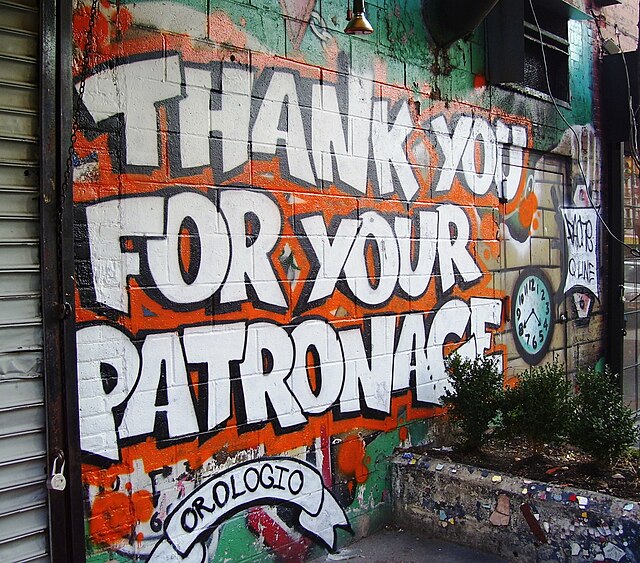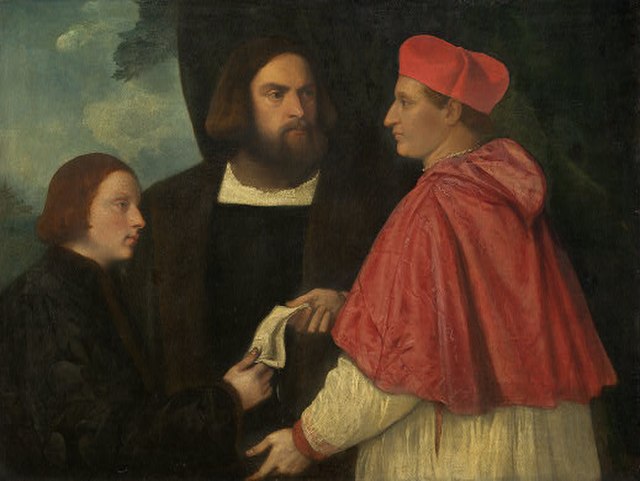Patronage is the support, encouragement, privilege, or financial aid that an organization or individual bestows on another. In the history of art, arts patronage refers to the support that princes, popes, and other wealthy and influential people have provided to artists such as musicians, painters, and sculptors. It can also refer to the right of bestowing offices or church benefices, the business given to a store by a regular customer, and the guardianship of saints. The word patron derives from the Latin patronus ('patron'), one who gives benefits to his clients.

Le Baron de Besenval dans son salon de compagnie at the Hôtel de Besenval, by Henri-Pierre Danloux (1791). As in the field of the arts, the baron was also a patron in the field of botany. In 1782, Pierre-Joseph Buc'hoz named a plant after the baron to thank him for his support. This plant had already received its scientific name a few years earlier and is therefore not known today as Besenvalia senegalensis but as Oncoba spinosa.
19th-century Japanese vase bearing the Imperial chrysanthemum, showing that it was commissioned by the Imperial family
A "Thank you for your patronage" message (in the sense "Thank you for being our customer") from Orologio Restaurant in the Alphabet City area of the East Village neighborhood of Manhattan, New York City
A benefice or living is a reward received in exchange for services rendered and as a retainer for future services. The Roman Empire used the Latin term beneficium as a benefit to an individual from the Empire for services rendered. Its use was adopted by the Western Church in the Carolingian Era as a benefit bestowed by the crown or church officials. A benefice specifically from a church is called a precaria, such as a stipend, and one from a monarch or nobleman is usually called a fief. A benefice is distinct from an allod, in that an allod is property owned outright, not bestowed by a higher authority.
Raphael's The Coronation of Charlemagne (1514–15). The 800 AD coronation led to disputes over an emperor's ability to hand out benefices.
Girolamo and cardinal Marco Corner investing Marco, abbot of Carrara, with his benefice. Titian, c. 1520
Cardinal Alessandro Farnese, grandson and cardinal-nephew of Pope Paul III, held sixty-four benefices simultaneously.






